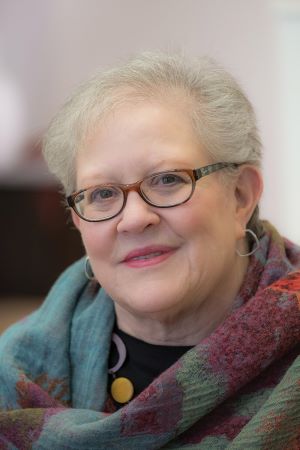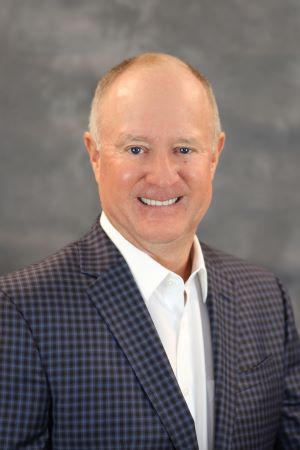With vaccinations in arms throughout the world, businesses and organizations are starting the process of at least contemplating a ramp-up back to in-person meetings.
Many experts in the conference center segment believe these purpose-built facilities, which are conducive to educational and training meetings, are well positioned to capture business from organizations that want to get their teams and members back together—or onboard new employees following major staffing disruptions—following more than a year of remote operation.

“Conference centers have always been the perfect environment in many ways, because so many of them are in places with outdoor space,” said Joan Eisenstodt, chief strategist of Eisenstodt Associates and past winner of IACC’s Mel Hosansky Award, the association’s top annual honor, and also the Pyramid Award for her conference center education work. “Even during what we’ve been through, conference centers had areas that were already being used for education, dining, etc., where people could be properly spaced.
“We don’t know whether we’re going to need a booster shot in six months to boost our immunity to the virus, so I think conference centers are better positioned to explain how they work and how they are smart [options],” she continued. “Groups are saying they want to put their toe in the water with meetings, and to me that’s the place to do it. Do it where it makes sense.”
Other conference center features that position the segment well as in-person meetings begin to awaken are that they are purpose-built to provide intimate learning environments; groups can often buy out an entire facility; and their pricing model is friendly, especially in the upcoming environment in which many relatively inexperienced planners, due to staff cutbacks, will be charged with organizing meetings.
“I will always be a conference center fan. They have always been the place where learning can happen as it should, rather than in straight rows such as in a hotel,” Eisenstodt said. “That’s not to take away from hotels—it’s just different. And I still think the complete meeting package is the easiest way to think through how you’re doing a meeting. Not only have there been staffing changes for facilities, but also in meeting planning, and there’s people who haven’t done this, and learning how to price is complicated.”
Free Webinar: Watch the On-Demand Version of Joan Eisenstodt's Site Selection Webinar]
The Road to Recovery
According to major conference center operators, training meetings will figure large when in-person meetings resume, as organizations will want to get their teams together or onboard new employees.
“Training meetings are definitely among the first types of meetings to come back, but not the very first,” said Hal Powell, regional vice president of sales and marketing for major conference center management company Benchmark Hospitality International. “What we’re seeing right now, as far as second quarter and third quarter ’21 meetings, are more retreats and teambuilding programs, and teams are interested in working together in the months ahead. But that said, we’ve seen a real uptick in training and development meetings in the last quarter of 2021 and especially 2022.”

Powell said among the first groups Benchmark is seeing booking or inquiring about booking are accounting and consulting firms, as well as groups that have a need for executive training and professional training programs because they are so integral to their short-term needs.
“Financial companies in major markets such as New York will hire a whole class of MBAs and put them through new-hire orientation this summer,” Powell said, adding that medical and pharma groups are primed to bring their training programs out of the virtual realm and back into an in-person setting.
“They’re saying we had the vaccines quite a while ago, so we’re ready to go,” he said. “I thought that was an interesting comment.”
Powell added that Benchmark is starting to see an uptick in continuing professional educational programming at university properties: “That business is coming back.”
To ease organizations back into holding in-person meetings, Benchmark recently launched its Meeting the Moment program, which enlisted a panel of F&B, teambuilding, technology and meetings design experts from within the company to work one-on-one with planners to discuss meeting design for the rest of 2021 and through 2022, with an emphasis on health and safety and cost containment.
Powell added that conference centers also excel in providing technology options for producing hybrid events because of their emphasis on the latest technology and AV capabilities.
Training by Teneo
Mike Schugt, president of Teneo Hospitality Group, a collection of approximately 350 luxury five-diamond hotels and conference hotels throughout the world, also sees a trend pointing to training meetings being among the first programs to come back to the in-person environment.

“Training meetings are something that definitely needs to happen and hasn’t happened, but I think some of these training meetings are going to take a little bit of a twist,” he said. “There’s going to be some training involved for sure, but also some recognition [programs] involved, too. We haven’t been together in a year [or more]. There’s companies at different continuums of profitability through this pandemic, but either way you’re going to want to have a multiuse meeting and be creative to maximize that opportunity because we haven’t seen each other for so long—we haven’t been in the same room.”
Echoing Eisenstodt’s view, Schugt believes the conference center mission of providing an environment focused on learning will be particularly valuable as organizations reconnect and onboard new team members.
“Typically, conference centers are built for learning maximization, and even changing the company’s path by virtue of the quality of that training experience,” Schugt maintained. “Conference centers are so integrated into the notion of experiential learning—everything from the chairs and desktops to audiovisual and type of food and beverage that it is offered. As a company, you can really take over. These are places where there are a lot of whiteboarding and flipcharting—it’s where maximum productivity can occur.”
Schugt, who added that conference centers also excel in offering a high degree of customization based on attendee preferences, also agrees with Benchmark’s Powell that meetings where continuing education are a priority, such as medical education, are going to be among the first in-person meetings to resume.
[Related: History Plays a Role in Amana Colonies’ New Hotel Millwright]
Ready to Roll at The National
One group that is ready to get together face to face is VA1 Tourism Summit, the annual gathering of Virginia tourism industry professionals held by the Virginia Restaurant, Lodging & Travel Association (VRLTA).
The 2020 conference scheduled for November at the Omni Richmond Hotel was canceled due to group gathering restrictions from the state, but the organization is optimistic that it can meet in-person again November 14-16, 2021, at Leesburg, Virginia’s The National Conference Center, which recently embarked on a major renovation of its guest rooms, public spaces and technology scheduled for a summer 2021 completion.

“We’ve grown [the VA1 Tourism Summit] to be quite a bit larger—almost 400 people,” said Eric Terry, president of VRLTA, who is currently in negotiations with The National to hold the conference. “The nice thing about The National is their ballroom and meeting space is big enough to accommodate social distancing. Hopefully, we won’t need to cancel again, but if we don’t, we can do it there. It’s the largest hotel in the state of Virginia, so that’s another big advantage for us.”
Terry is also a big proponent of the conference center concept, having worked for Benchmark as vice president of sales and marketing.
“The nature of a conference center is it’s more of an immersive experience in learning and teambuilding,” he said. “If you take them to a Hawaiian resort you don’t have those same opportunities.
“In a conference center environment, you have a lot less distractions than what your core mission is,” Terry continued. “Companies are going to need to pull people in and get them immersed in the company culture and there’s no better way to do that than in a training session. Culture doesn’t always work in a Zoom call, so I think conference centers will come out of the box pretty strong. “
Q&A with Mark Cooper | President & CEO | IACC | www.iacconline.org

As in-person meetings begin their comeback, many believe conference centers will be some of the first facilities to host gatherings, given the need for employee training and executive retreat programs as the economy ramps up.
Many conference centers have long relied on buffet-style F&B service in order to efficiently serve attendees and maximize productivity time. The IACC recently published two guides that detail the conference center segment’s reimaging of its F&B offerings during the pandemic and beyond: IACC Guide to Re-Imagining Conference Lunch Breaks and IACC Guide to Re-Imagining Refreshment Breaks. Both guides are available at www.iacconline.org/re-imagining-lunches-breaks.
We reached out to Mark Cooper, president and CEO of IACC, to see how the segment has adjusted its F&B service in the wake of the pandemic, and how those changes may ripple out into the future.
Meetings Today: How have facilities in the conference center segment adjusted their F&B service to ensure the safety of staff and attendees?
Mark Cooper: A number of IACC venues have moved from restaurant buffet/self-service to group-by-group bubble service, in separate locations. This has been important in the last few months, but as vaccine levels reach significant levels, we expect to see such measures dissipate and buffet service return at the appropriate time. Perhaps with more staff-served buffets rather than self-service.

We also see more interest around outdoor dining and networking for those regions and seasons where this is an option. Service styles adjust in such instances, including more barbecue- or picnic-style service rollouts.
How is the conference center environment especially conducive to safe F&B service in general?
Smaller specialist conference venues are designed to host multiple smaller groups, where often larger convention or conference venues host just one at a time. The floorplans and configurations of meeting space, to networking/social spaces and also breakout spaces in smaller dedicated meeting venues, lend themselves to being able to easily create individual group-by-group dining and social spaces, close to meeting spaces. This allows for very effective self-containment.
IACC's member venues, when not located in central urban settings, very often offer expansive outdoor spaces, which before 2020 were being used for memorable outdoor food and beverage service. We have seen further development of such spaces, including making them more complete with other services such as strong Wi-Fi and other amenities.
Do you think what’s happened in the last year-plus will have a lasting impact on F&B programs in general, and specifically to conference centers?
I hope so, in the areas where innovation has reigned in the last few months. For example, we long held the view that queuing for food and beverages at break times and lunch times was unavoidable. We now see creative mobile solutions for advance communication of F&B options and even pre-ordering for events, which offer the strong potential to reduce meeting queues.
The pandemic has laser-focused our attention on reducing food waste and our events’ impact on the environment. I really hope this is the time where we will never sit back and see high food wastage be accepted, and instead use our technology to provide data to better predict the needs of our delegates through pre-selection.
Read Next: Incorporating Experiential F&B Teambuilding Programs Into Your Meetings The IACC Way






